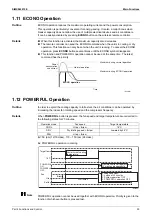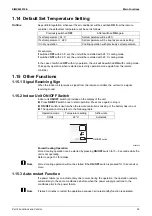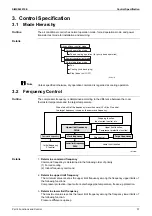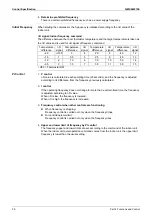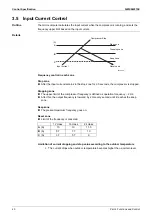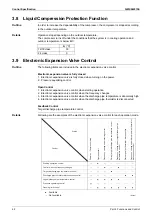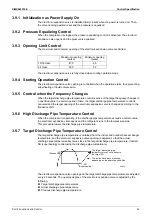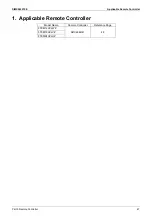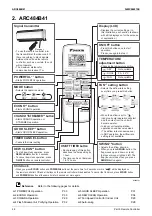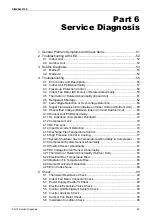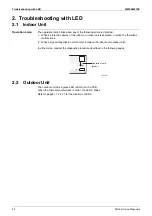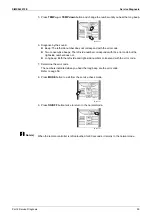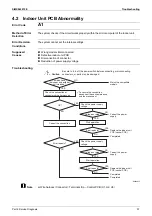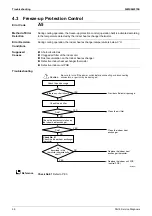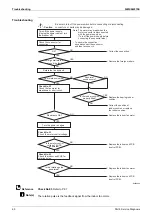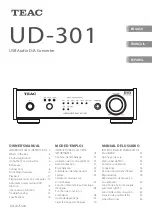
SiMX042215E
Control Specification
Part 4 Functions and Control
45
Reference
3.10 Malfunctions
3.10.1 Sensor Malfunction Detection
Sensor malfunction can be detected in the following thermistors.
1. Outdoor heat exchanger thermistor
2. Discharge pipe thermistor
3. Radiation fin thermistor
4. Outdoor temperature thermistor
3.10.2 Detection of Overcurrent and Overload
Outline
In order to protect the inverter, an excessive output current is detected and the OL temperature
is observed to protect the compressor.
Details
If the inverter current exceeds
A
A, the system shuts down the compressor.
If the OL (compressor head) temperature exceeds
B
°C, the compressor stops.
3.10.3 Refrigerant Shortage Detection
I: Detection by power consumption
Refrigerant shortage is detected if the power consumption is below the specified value and the
frequency is higher than the specified frequency.
When refrigerant is insufficient, the power consumption is lower than normal operation. Hence
refrigerant shortage is detected by checking power consumption.
II: Detection by discharge pipe temperature
Refrigerant shortage is detected if the discharge pipe temperature is higher than the target
discharge pipe temperature, and the electronic expansion valve is fully open for more than the
specified time.
III: Detection by the difference of temperature
Refrigerant shortage is detected if the difference between suction and discharge temperature is
lower than the specified value.
A
(A)
10 ~ 11.5
B
(°C)
120
Frequency
Power consumption
Refrigerant shortage zone
(R23535)
54 ~ 60 Hz
(depending on
the model)
(R1391)
Target discharge
pipe temperature
Refrigerant shortage
zone



